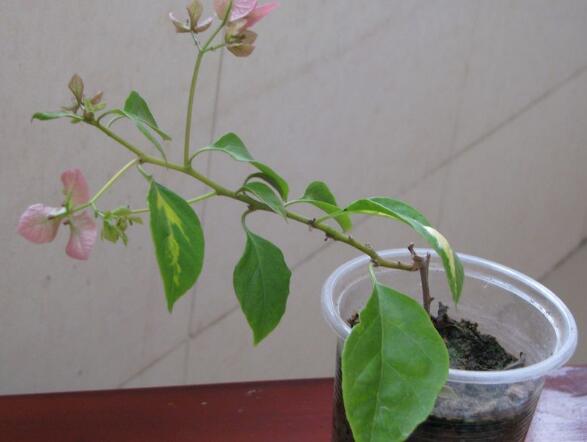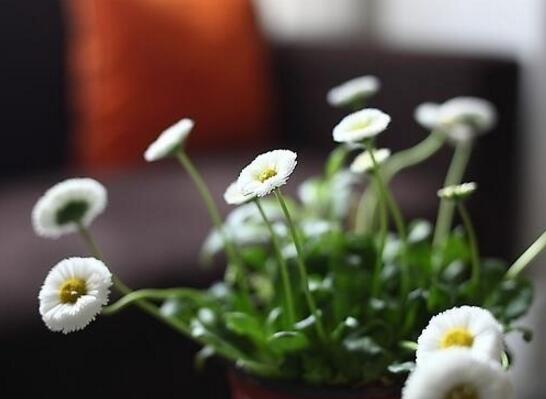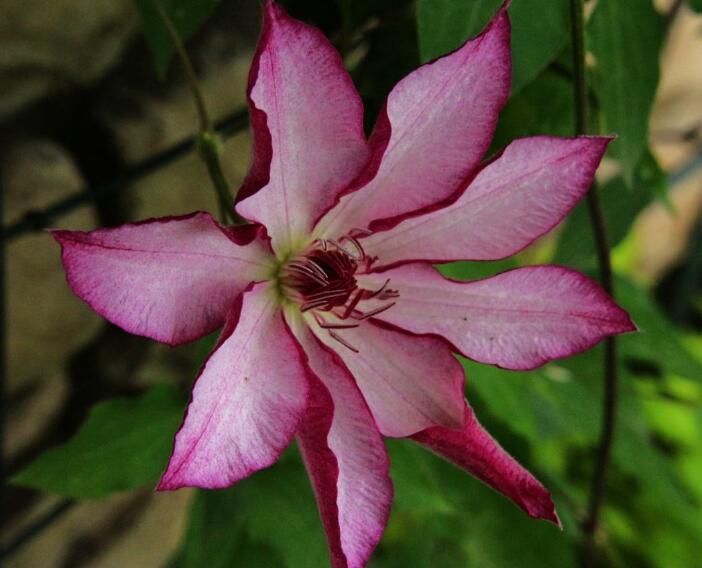When is the best time for triangulated plum cuttage? the method of triangulated plum cuttage / March cuttage is 4 steps in place.
The beauty of triangular plum does not need to be described too much. People should be impressed by the beauty of triangular plum. Its green leaves and bright colors are really beautiful. In addition to beauty, triangular plum has many effects and functions, so it is multiplied in large numbers. As for the cuttage commonly used in the propagation of triangulated plum, in which month is the cuttage best? The following is the editor to bring you a very detailed triangulated plum cutting method.
First, triangulated plum cutting is the best in which month, from March to June.

The propagation methods of triangular plum are cutting, high pressure and grafting, but the most convenient one is undoubtedly cutting, but if you want to have a high survival rate of cutting, the choice of time is very important. As for when the cuttage of Prunus mume is the best, according to the personal experience of the majority of flower friends, it is concluded that it is appropriate to take root from March to June, the general temperature is about 25 ℃, and it can take root in about 30 days.
Second, the cutting method of Prunus mume
Materials: a flowerpot, a bottle of rooting water
1. Cuttings selection
Triangular plums are poisonous and have thorns on the branches, so it is best to wear gloves when taking cuttings. Cuttings are generally cut off from the sunny branches, the new branches had better bring some old branches, leave a few leaves at the top, and cut off the rest. If everyone is not in the best time to cut, but after June, then we have to choose semi-lignified new branches as cuttings.
Cuttings treatment: after selecting cuttings, we still have to carry out some treatments. Soak the base of the cuttings in rooting water for a period of time.
2. Cutting substrate
Before cutting triangulated plum, the substrate needs to be prepared. According to the growth habits of Prunus mume, its cutting substrate is commonly used: River sand, vermiculite, perlite, plain sand soil, peat soil, flower mud and so on. As far as the editor is concerned, it can be a little simpler, just choose Susha and perlite. Then pour the matrix into the flowerpot.
Soil selection: after the matrix is poured into the flowerpot, we still have to spread a layer of 7-8 cm of soil on it. As for soil selection, nutrient soil containing humus, loose and well drained can be selected according to the requirements of soil in the culture method of triangulated plum.
3. Triangulated plum cuttage begins
Get ready for the above, triangulated plum cuttage can be officially started. First of all, insert the cuttings into the basin soil to expose the leaves above. Pay attention to the distance between the cuttings. Don't be too dense. After the cuttage of Prunus mume is finished, cover the flowerpot with a layer of plastic film, and use needles to insert some holes in the film in order to breathe, pay attention to the distance between the holes.
After that, move the flowerpot to a place where there is light, but not in direct sunlight. Then spray a little water on the cling film to keep the cling film moist and let the triangular plum absorb water better. After the above steps, the triangulated plum cutting is basically completed, followed by the later maintenance.
4. Maintenance and management
The maintenance of triangulated plum after cutting is also very important. About 5-7 days after the cuttage is finished, you can uncover the cling film once to let the triangular plum breathe. Then observe the humidity of the basin soil, if dry, water properly, and spray fog on the branches and leaves every time. About 30 days, triangulated plum can take root, at this time everyone to completely open the transparent film normal maintenance!
With regard to the method of cutting propagation of triangular plum, the editor has introduced this. Although there are still grafting and high pressure methods for breeding triangular plum, what is most suitable for flower friends is still cutting. So if you want to make more than one pot of triangular plum at home, try it with the above method. This is the right time. If you miss it, you have to wait for another year.
Common cutting method of Prunus mume
Soil treatment
First of all, prepare the cutting substrate. Vermiculite, perlite, peat, 1:1:1. Sand, plain sand loam, etc.)
Add a small amount of slag to the culture soil, sift the slag before cutting, select particles of about 2 to 5 mm, soak in boiling water and disinfect. Control the water to cool and dry until it is not dripping, then stir thoroughly and set aside.
Prepare the flowerpot
If you need to cut multiple pots, you can use a simple plastic pot, and put it on the pot after the cutting is successful. After selecting the flowerpot, you need to load the soil, and put some elastic catkins on the bottom of the flowerpot.
After the soil is installed, water it thoroughly, put it in the sun and let it dry.
Branch pruning
Cut the sunny branches as cuttings, and the new branches had better bring some old ones. After June, the semi-lignified new branch does not need to bring the old branch.
Cut the cuttings, the old branches should be thick, and there are new branches with leaves.
Cut the cuttings with a sharp knife, leaving two leaves with two large leaves, and the small leaves with two leaves and one bud, about 7-10cm, cut off the base of the branch, the cut mouth is uneven, the tissue is damaged, cut off the damaged tissue with a sharp knife, and cut the base into a bevel with one knife. The picture below is the arranged branches.
Soak the branches
Prepare the rooting powder according to the instructions and soak the base of the cuttings.
Cutting method
Punch the hole obliquely with a clean (sterilized) stick, 7-8cm deep, and then bury the cuttings to expose the nodes of the remaining leaves.
Insert a basin, pour some cold boiled water or barreled water, so that the matrix is in close contact with the base of the cuttings, conditional can cover the basin outside, easy to manage.
Keep fresh film moisturizing. There are air vents above and places with sparse sunlight for maintenance.
In mid-June, the seedlings survived and were planted in pots.
The method of Flower Mud cutting of Prunus mume
Flower paste preparation
The general family does not have flower paste, go to the flower shop to buy a piece, go home and cut it into small pieces of about 2 × 2 × 4cm, and wrap the rest of the flower paste in paper for spare.
Cutting method of flower paste
Cut the lignified or semi-lignified branches of the same year, the length is 10-15 cm, keep 2-3 leaves above, and cut off the stem about 5 cm below. The lowermost section of the branch is cut at an angle of 45 degrees and then soaked in rooting water.
Insert the cuttings into the flower mud block, insert it at a depth of about 1 / 2 / 2 / 3 of the flower mud block, and then soak the flower mud block in water (you can also soak it before inserting it).
If there are more varieties of cuttings, we should find a way to make a mark to avoid confusion. Dark green flower paste + light green leaves, the effect is not bad!
Maintenance of flower paste after cuttage
Place the inserted seedlings in a tray, cover them with a transparent plastic cover, and place them in an environment with enough scattered light. Pay attention to moisturizing and breathable.
When the temperature is above 20 ℃, the bottom of the flower mud will meet many small white roots in about 30 days, which indicates that the cuttage of Prunus mume can be planted in a pot together with the flower mud.
Matters needing attention in cutting of Prunus mume
Selection of branches
For the old branches of the next year, the coarse branches with a diameter of more than 0.5cm are not very suitable for flower mud planting, and it is more suitable for water or sand planting. Try to choose strong branches of the year, too tender branches can not be used, weak survival rate is not high, only long branches can also be used.
Rooting water
In fact, no matter what kind of cutting method, it can take root without rooting water, and the use of rooting water only shortens the rooting cycle. Many flower and bird markets are sold, a small bag of rooting points can be used many times, according to the instructions to soak. Generally, the concentration is high, the soaking time is shorter, the concentration is low, it is longer. Under normal circumstances, soak in 1% rooting water for 0.5 hours.
Post-cutting maintenance
The most important thing in the maintenance of triangular plum is to keep it moist and breathable. Moisturizing is not enough, the leaf wilting scorched is not good, should often check, if the potted soil or flower mud is relatively dry, you can spray more water, so as to avoid leaf wilting. When the root of triangular plum grows well and new leaves grow, the film will be removed in time.
The content of triangulated plum cuttings will be introduced to you, interested friends can try!
How to cut Prunus mume how to cut Prunus mume
Triangular plum, alias kudzu, three-leaf plum, leaf flower and so on, is often used as bonsai or gardening. Do you know how to cut triangular plum? Next, let's take a look at the cuttage method of triangular plum.
The main results are as follows: 1. the best cutting time is spring and summer and autumn. In spring (March to April), the pruned annual branches can be used for cutting (also known as old cutting), but the survival rate is not too high, only about 70%. Summer and autumn is the peak growing season of triangulated plum, so the semi-lignified branches of the same year are selected for tender cutting, and the survival rate can reach more than 90%. As long as the management is strengthened, it can blossom in that year.
2. The cutting substrate is relatively random, and flower friends can use local materials. The matrix can choose coarse sand, fine sand, sandy loam with good permeability, loose soil that is not too fertile, or mashed and burnt briquette, cinder and so on. Then add 0.1% carbendazim for disinfection, accumulate the soil and cover it with a film for 7-10 days. The slotting machine is 1-1.2 meters wide, 15-20 centimeters high and unlimited in length.
3. In the treatment of cuttings, short and stout annual branches with short internodes were cut into 8-10 cm long, leaving only 2-3 leaves on the cuttings. Treatment with rooting element before cutting can promote its early rooting and more rooting.
4. The suitable cutting depth is 3 to 4 cm (equivalent to 1 / 3 or 2 / 5 of cuttings). Before inserting, punch the hole with the insertion rod, then insert the cuttings, and press the matrix at the base of each cuttings slightly to make the cuttings come into close contact with the matrix. Then pour the water once and cover it with a film to keep warm.
Note:
1. Try to reduce the bacterial content of cutting substrate (sand, cinder, soil, etc.). Sand can be disinfected by various methods, such as sun exposure, boiling water, potassium permanganate or carbendazim sterilization and so on. Cinder should be fresh. Pot edge cutting should try to reduce the use of immature organic fertilizer and high concentration of chemical fertilizer, reduce the chance of carrying bacteria and root damage.
2. Keep it in a cool place to reduce water evaporation.
3, pay attention to keep moist, but not too much moisture, too much water is easy to breed mold, and bad for hair roots.
3. Prunus angustifolia is a southern flower, which is suitable to grow in the soil environment of pH 6.0 to 7.0. The soil and water in the north are alkaline, and ferrous sulfate solution can be applied once a month.
- Prev

How to reproduce daisies, how to reproduce daisies / sowing / cutting / ramet
Daisy, a plant native to Europe, was introduced to China. Nowadays, it is not a common flower in people's life. Although it is quite common, many people may not know much about how to reproduce daisies. The breeding methods of daisies are explained in detail below. Interested friends come and have a look.
- Next

How to propagate Clematis, the method of propagation / sowing / cutting / ramet of Clematis
Clematis is a common plant in people's life, because of its gorgeous appearance, it is loved by many people. Because there are more people like it, how to breed clematis has become an issue of concern to people. What are the breeding methods of clematis? Next, the editor will take you to learn about it.
Related
- Fuxing push coffee new agricultural production and marketing class: lack of small-scale processing plants
- Jujube rice field leisure farm deep ploughing Yilan for five years to create a space for organic food and play
- Nongyu Farm-A trial of organic papaya for brave women with advanced technology
- Four points for attention in the prevention and control of diseases and insect pests of edible fungi
- How to add nutrient solution to Edible Fungi
- Is there any good way to control edible fungus mites?
- Open Inoculation Technology of Edible Fungi
- Is there any clever way to use fertilizer for edible fungus in winter?
- What agents are used to kill the pathogens of edible fungi in the mushroom shed?
- Rapid drying of Edible Fungi

